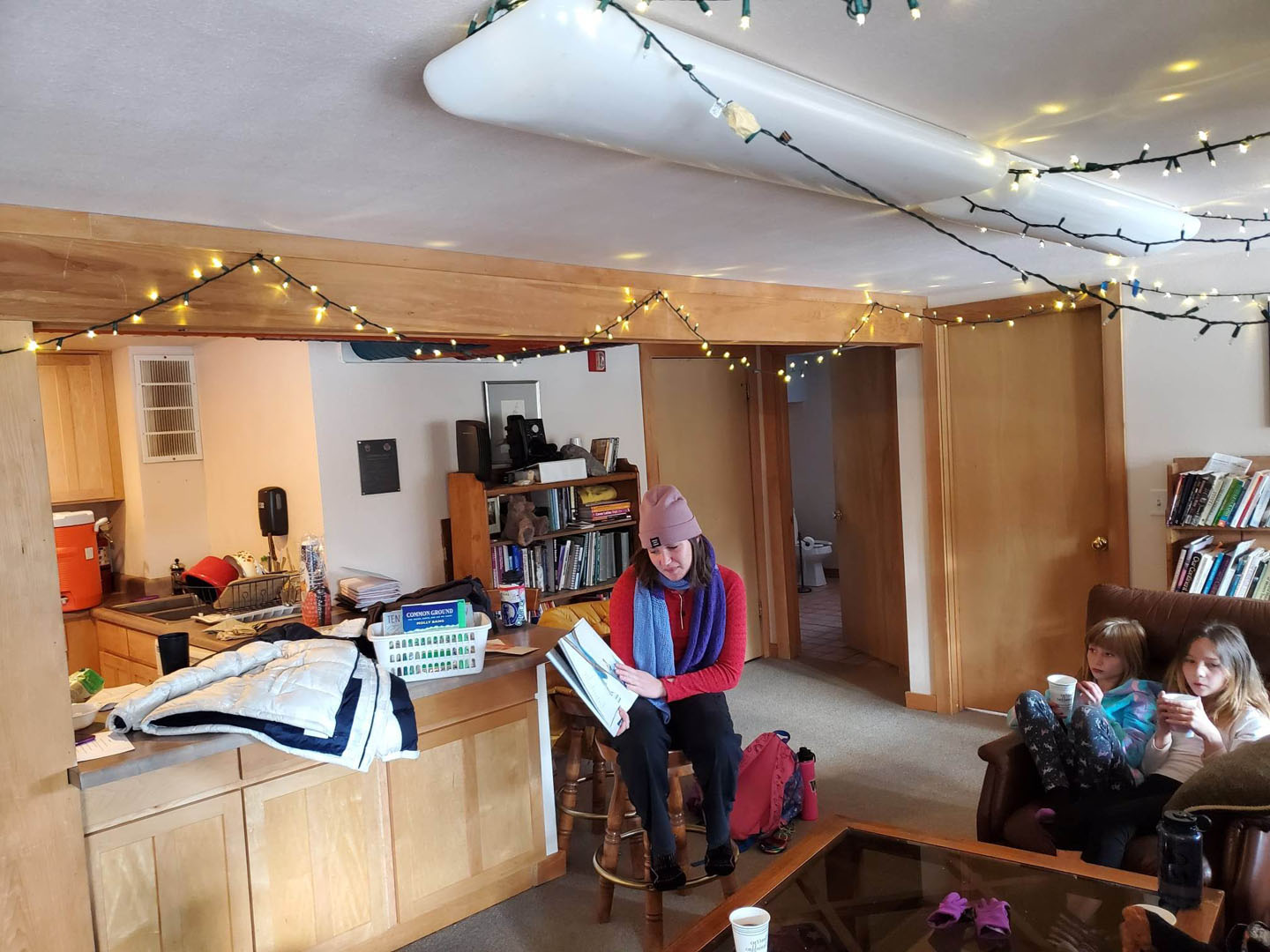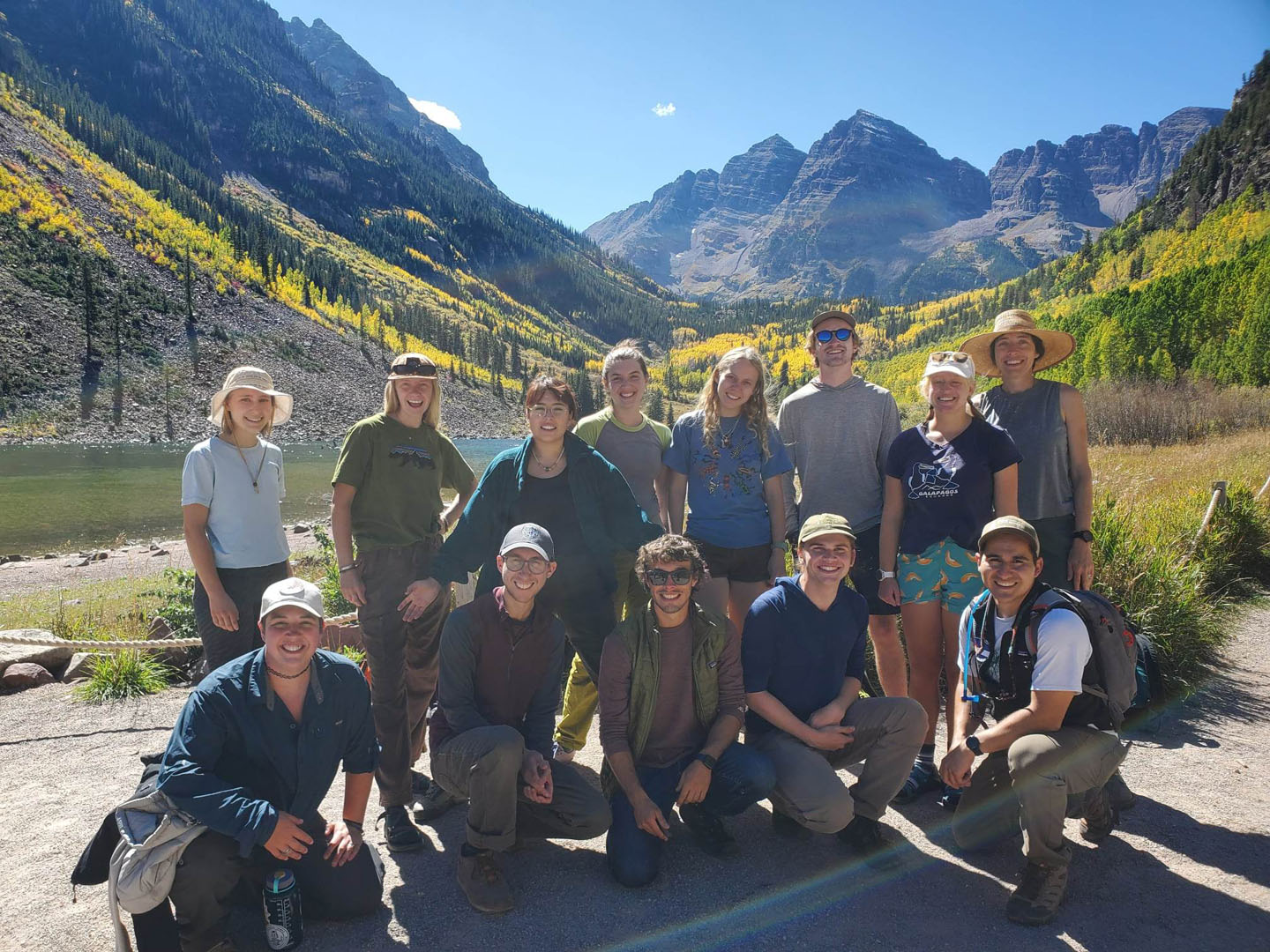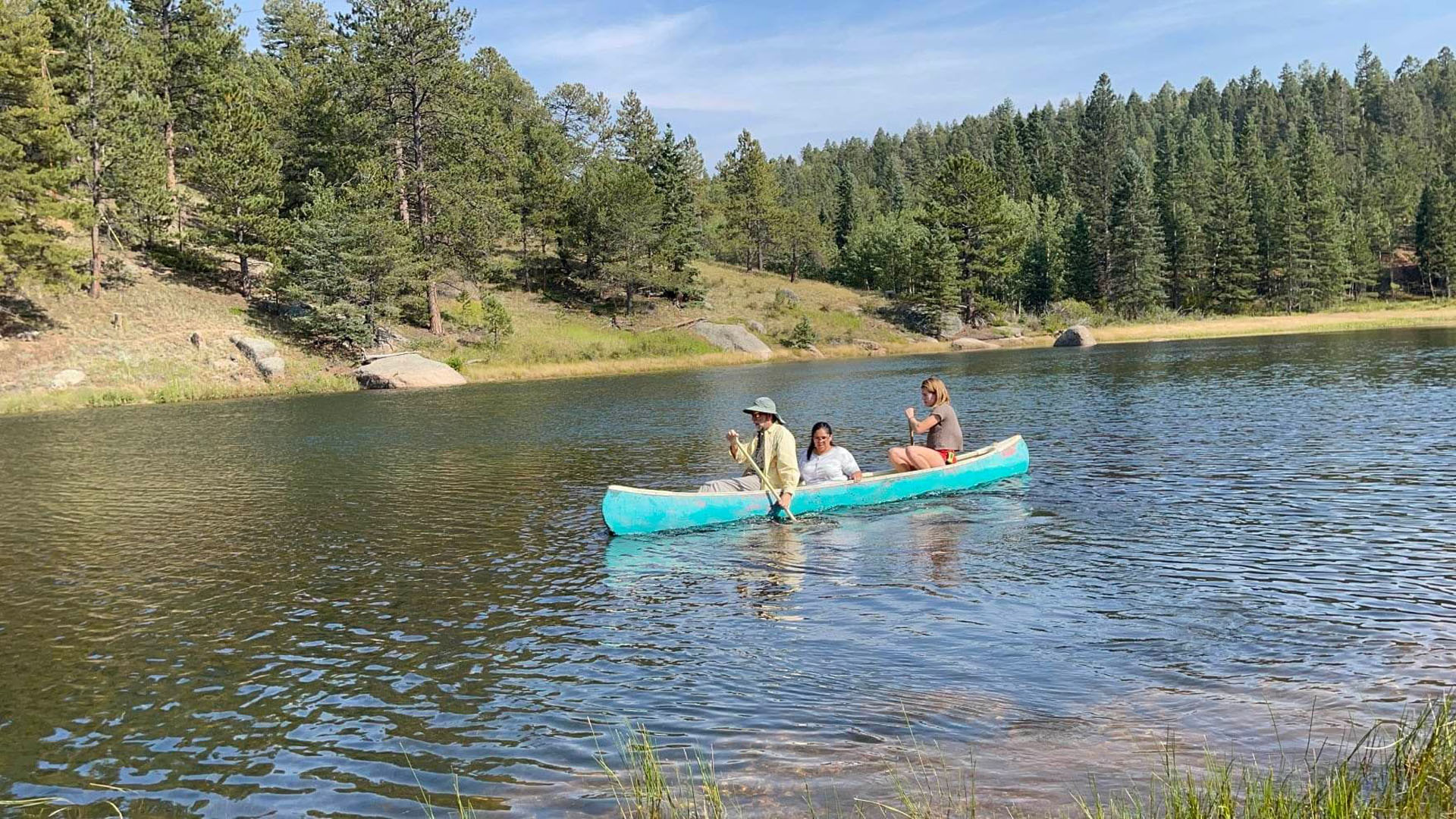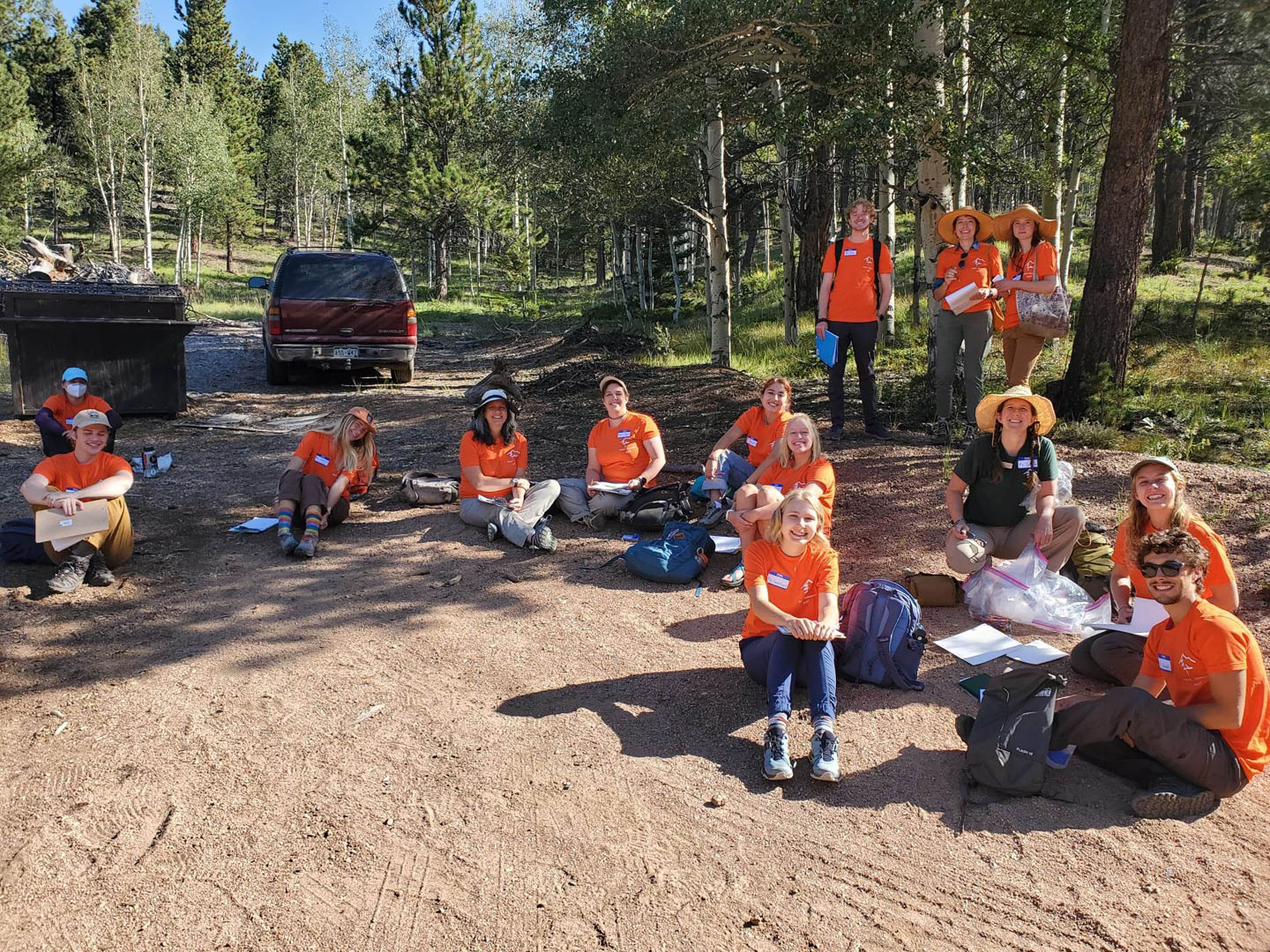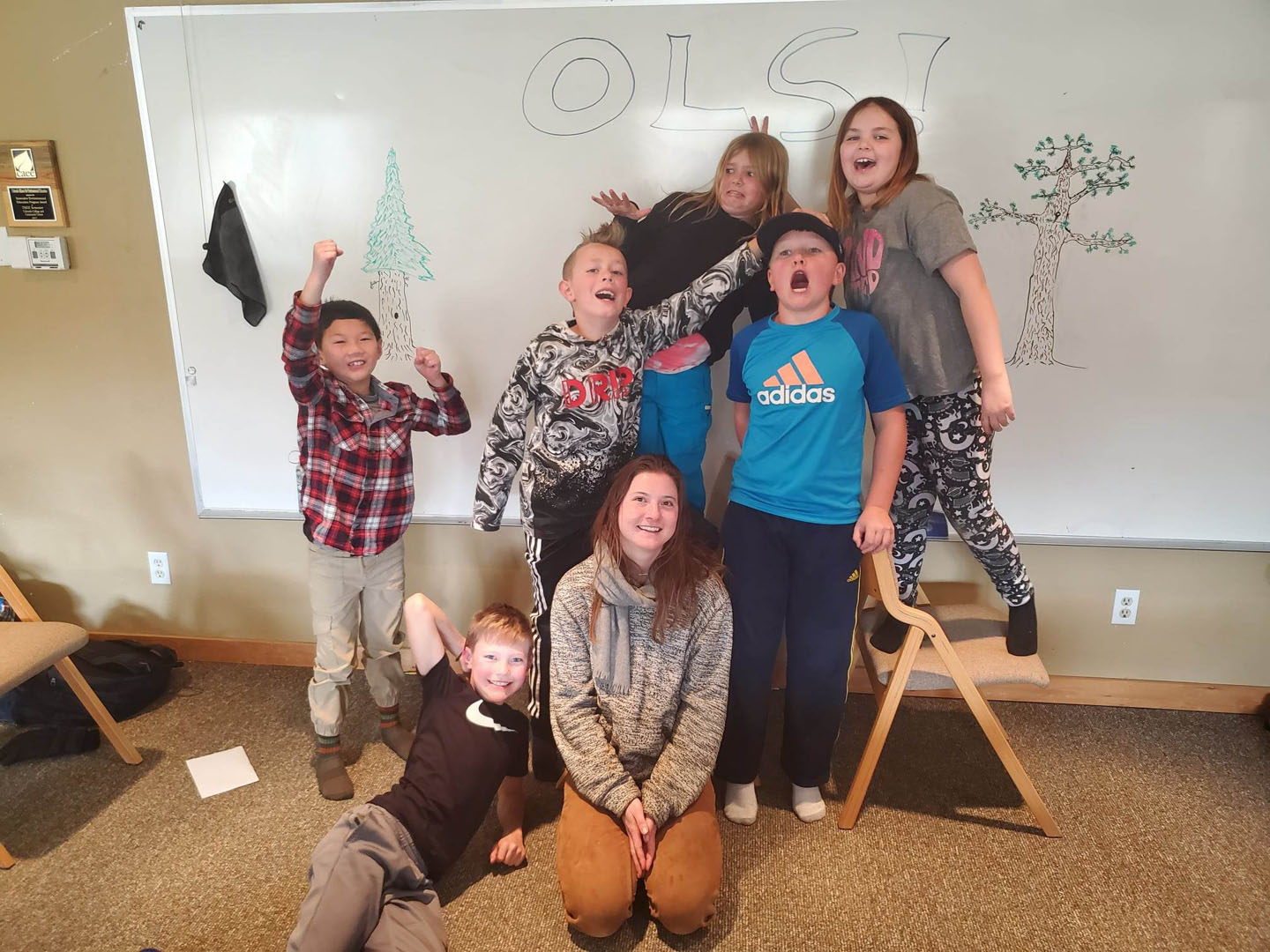Almost 90% of students who complete Colorado College’s Teaching and Research in Environmental Education (TREE) Semester remain in a teaching field or an environmentally motivated career. The reason? Students enrolled in the TREE Semester design and teach their own curriculum, complete almost 100 hours of experiential teaching, and conclude the semester with a professional portfolio, says Howard Drossman P’23, TREE Semester program director and professor of environmental education.
The TREE Semester is a 16-week residential semester, similar to a traditional study abroad experience, where students live and learn at the Catamount Center, in the montane forest near Woodland Park. While the program is open to all CC students, it was especially designed for students interested in environmental and educational fields. Unlike typical teaching programs that provide a limited number of teaching opportunities, TREE students have almost 100 hours of experiential teaching, where participants teach and research how K-12 students develop.
The Catamount Center for Environmental Science & Education is a field school and outdoor education center. TREE students work alongside the Catamount Center staff to inspire excitement and passion for outdoor learning in local K-12 students.
“Our educational research informs our teaching, and our teaching informs our research in a virtuous cycle of learning,” says Drossman.
Drossman founded TREE in 2015 with his wife, Julie Francis P’23, a former visiting lecturer in the Education Department and executive director for the Catamount Center. Drossman and Francis piloted the program with elementary school students and four fellows in 2014, but CC students didn’t participate until the following year. Drossman and Francis received some funding for the pilot by placing third in the Big Idea contest.
CC students can only participate in TREE once, but Drossman often hires TREE alumni to return as fellows. Fellows are residents who assist students with their science and education assignments, run the community, and take lead roles on the early teaching.
While students in TREE Semester take four classes and receive credit for four blocks; the four classes are taught together over the duration of the semester. All TREE students take the same three required education classes and one of two electives or an independent study. Drossman and Juan Miguel Arias ’12, visiting instructor at TREE for the past three years and newly-confirmed assistant professor of education, each teach two of the four classes.
By the end of the semester, each student has developed a professional portfolio that they submit to the Colorado Alliance for Environmental Education for professional certification.
“The knowledge they display in this portfolio is equivalent to what many professionals in the environmental education field have received. Of course, the number of hours of teaching experience cannot rival a professional environmental educator, but the mixture of theory and practice is unique. Currently, almost one-third of all professional Colorado environmental education certifications have been awarded to TREE alums,” says Drossman, who has worked at CC since 1992 and directed the Environmental Studies Program from 2000 through 2007.
One reason for the large number of TREE Semester students who remain in the field after graduating is that TREE Semester participants create and teach their own curriculum to both elementary and high school students, which gives them an opportunity to experience teaching in a practical way. “Students constantly report back that this experiential approach to learning about education theory by tying it to practice allows them the better understand how teaching should be done and what it looks like in formal situations,” says Drossman.
“There is so much to be said for direct, real-life teaching experiences for illuminating what the environmental education profession is about,” says Arias, who graduated from CC in 2012 with a degree in neuroscience.
“The TREE program is notable because it provides authentic teaching experiences for the participating undergraduates; it is not just learning ‘about’ environmental education and environmentalism; our undergraduates are the actual nature educators for fourth and fifth graders and high-school students; this kind of experience helps clarify for the undergraduates—so much more than an abstract classroom experience—what it is like to be an educator,” says Arias.
“Writing and teaching our own curriculums—which lasted throughout the semester—was certainly the most prominent and powerful experiential learning experience,” says Paige Simenz ’24, who participated in TREE last fall.
“When I first learned about TREE, I imagined I'd end up doing it at some point since it aligned so well with my interests, and I had never heard of anything else like it; getting to write and teach curriculum specifically focused on environmental education to real students is such a unique opportunity as an undergrad,” says Simenz, who plans to become a high school environmental science teacher.
Many students who participate in TREE later go on to complete CC’s Master of Arts in Teaching (MAT) Program.
As part of the program, TREE participants spend 50 to 60 hours teaching fourth and fifth grade students during the semester, and about 10 hours teaching high schoolers. Most elementary school teaching is done outside, and about half of the lessons for high school students are done outside. As part of these hours, TREE students create and write most of the curriculum and complete 15 to 20 hours of teaching at the local schools.
Connor Nolan ’20, M’21, participated in TREE in 2017 and now works as the education director for the Catamount Center, where he develops and updates the curriculum they use with the students at Columbine Elementary School as well as with TREE students, supports their relationships and partnerships with the different programs, and supports current, former, and future TREE students in numerous ways.
Nolan wasn’t planning on enrolling in the MAT program until he participated in TREE. “I fell in love with teaching at TREE Semester and decided then that education was something I wanted to do with my life. Of course, many other factors influenced that decision, however, ultimately the experiences and opportunities I had during that time led me to want to pursue teaching as a career and thus, do the MAT program,” says Nolan, who was a history major and education minor.
Nolan says the greatest similarity he sees between TREE and the MAT program is their experiential nature. “Both emphasize getting you in a classroom, in front of students, kind of just doing the stuff. I don’t know of any other undergraduate program or experience that allows you to design your own curriculum over the course of a semester while working with the same group of students over that time. That type of opportunity to see students grow, to work with them in a capacity that is relatively similar to how it may be in your future if you choose to continue in that field, it’s incredible.”
“I realized I wanted to become a teacher throughout the course of TREE. I realized this because of the opportunity we had to design and teach a unit with high school students from Tesla Educational Opportunity School in Colorado Springs,” says Nolan, who is a licensed high school social studies teacher.
On average, nine CC students participate in TREE each year. There is no required coursework for admission to TREE, but in Drossman’s experience, students who have good writing and community living skills, as well as previous science and education classes, tend to be most successful in the program.
Simenz says that that one of the most important things she learned at TREE was the importance of allowing flexibility in lessons, and that it’s okay to make mistakes.
“Obviously, when you're teaching to fourth and fifth graders, you want to have a really well-planned lesson plan and present it in a fun and engaging way. However, given that both the students and surroundings are so unpredictable, of course things won't always go to plan. I think that it was really important for me to have these experiences when a lesson seemingly got derailed, but still being able to focus on the truly important things—regardless of the specific lessons—like the students having positive experiences outdoors and getting to ask and investigate interesting questions about the world,” says Simenz, an environmental science major.
“This taught me the importance of having several levels of learning objectives so, even if a few parts of lessons don't go as planned, you don't overly focus on the specifics and are able to celebrate still working towards larger-scale goals for the learners' development,” Simenz says.
Nolan’s favorite part of TREE was building relationships with students, colleagues, friends, professors, and places, he says. “Some lessons I learned at TREE were that teaching is relational. The core of everything a teacher does is building relationships among their students, families, colleagues, and content. I also learned that content is only as good as it is relevant.”
TREE Semester also works to advance CC’s commitment to antiracism in numerous ways.
“My doctoral thesis was on inclusivity in environmental education, so I was immediately drawn to the TREE program and the possibilities for inclusive and anti-racist work in environmentalism that it provided. After one year of involvement with TREE -- this past year was my third year of involvement – we shifted one of the foundations courses to more explicitly focus on critical and equity-focused topics in environmental education, changing the course from ‘Foundations of Environmental Education’ to ‘Critical Foundations of Environmental Education,’ for instance,” says Arias.
The Catamount Center was founded in 1997 when Francis and Drossman first purchased the 177 acres and established the mountain campus, which is dedicated to ecological stewardship, research, and outdoor education. Francis, who is a certified forest therapy guide, teaches both TREE and K-12 students about connection to nature through activities such as forest bathing, which is a method of relaxation among trees, and forest therapy, which is the practice of developing a relationship of reciprocity with the land.
Francis also works to ensure a positive community that inspires a culture of kindness. “Living at the Catamount Center in a healthy and vibrant community is critical to the success of the program. The TREE community is its own ‘ecosystem.’ Every member is essential to the well-being of the whole community,” says Francis.
Living at the Catamount Center was a positive experience for Simenz. “From taking daily lake swims to things as little as walking on wooded paths between the dining hall and the classroom, you're truly immersed in this gorgeous landscape. I think that this aspect of the semester was imperative to helping me feel grounded during a pretty hectic semester, and I have rarely felt as deeply rooted in place,” she says.
While Simenz thinks people tend to have a pretty strong interest in environmental education before committing to TREE, she believes that the curriculum at TREE is structured to explore and emphasize the interdisciplinary nature of environmental education, which allows students to understand the broad opportunities within the environmental education field.
The deadline to apply for TREE Program Fall 2023 is March 15, 2023. For more information, apply on SUMMIT or contact Howard Drossman at hdrossman@coloradocollege.edu.




